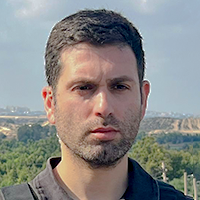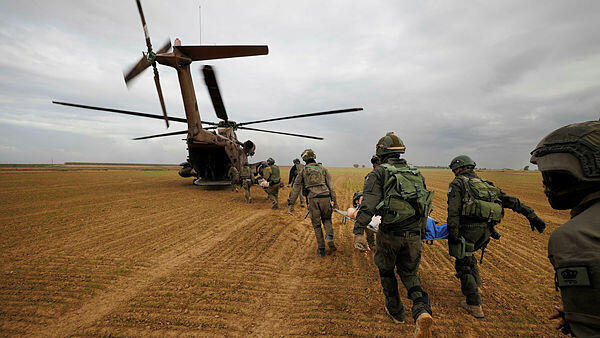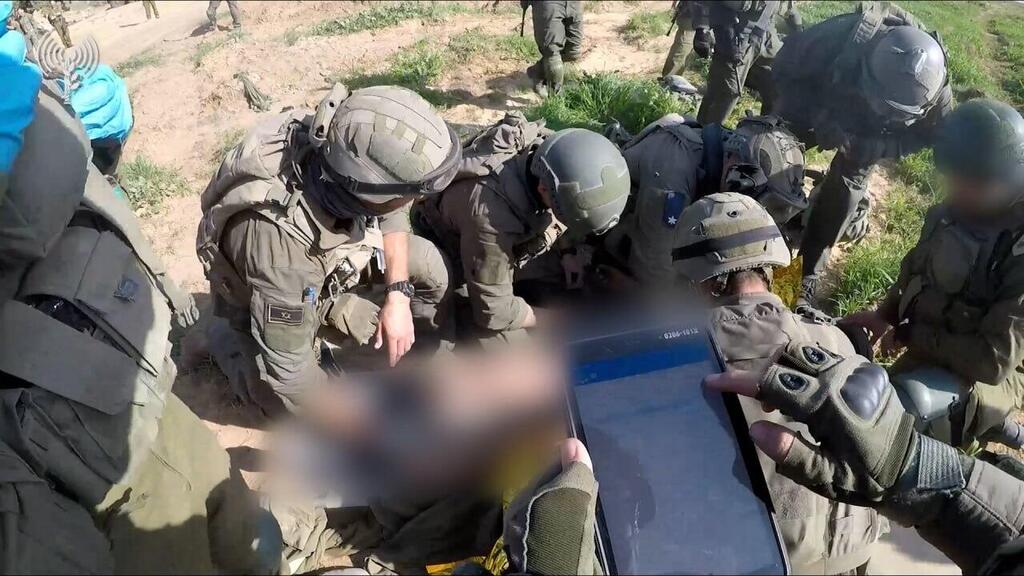Evacuation of wounded in Gaza
(IDF)
The IDF has been breaking records in the successful treatment of wounded on the battlefield, so much so that its leading Medical Corps officers have briefed NATO and allied militaries on how it had minimized fatalities and increased survival rates in the Gaza war.
The military instituted changes to its medical procedures including the deployment of highly trained physicians with the fighting units, altering protocols to treat injuries in the field and cutting down time from injury to hospitalization.
4 View gallery
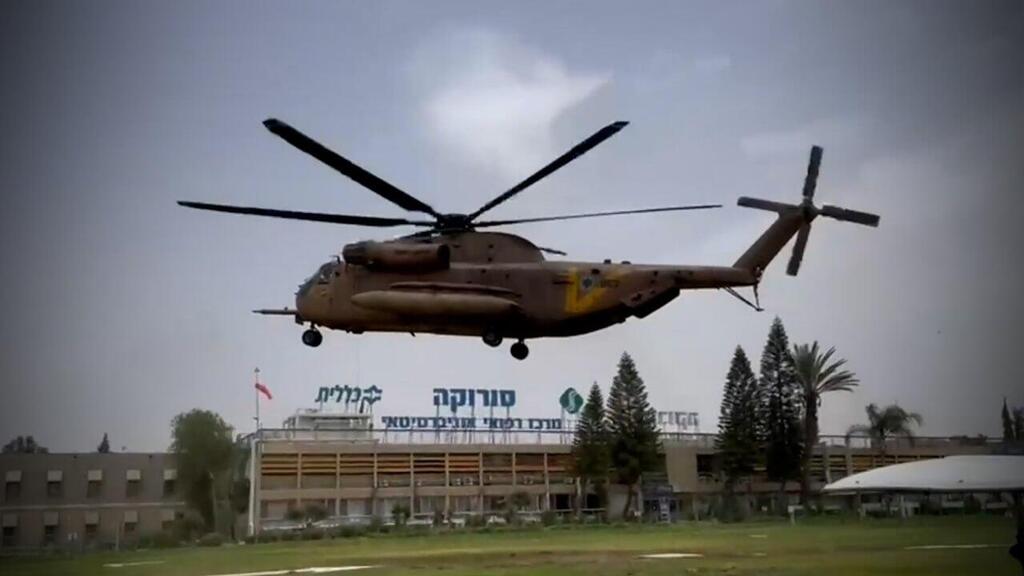

Military chopper lands with injured from Gaza at the Soroka Medical Center
(Photo: Soroka PR)
The change came with the decision to scrap wounded triage centers near the fighting, where soldiers who were hurt would have been taken before being evacuated to Israeli hospitals. This along with the deployment of some 670 doctors and paramedics with the fighting units, enabled the quality of care to improve and cut time until evacuation.
Currently, from the moment of injury, the soldier is seen by a senior medical practitioner within no more than four minutes. The new policies dictate removal to hospital quickly, without treatment in the field, either by dedicated armed vehicles fitted as ambulances, and manned by surgeons and intensive care specialists, or by military choppers, who have already transported hundreds of wounded from the fighting.
The average time from injury until arrival to hospital has been cut to an average of one hour and six minutes, down from two hours and ten minutes, in the 2014 war in Gaza, which was fought closer to the border with Israel.
Some 300 soldiers were killed since the ground offensive in Gaza began, over 40 of them were medics, paramedics and doctors who perished while trying to save the lives of others, amid fighting. Over 200 soldiers suffered serious injuries and their lives were saved thanks to the quick and efficient medical care that the received.
According to IDF figures, some 950 extractions were carried out by chopper, 4,200 wounded soldiers were attended to by doctors in the field, 2,400 were evacuated by land, 80 received life-saving transfusions of plasma and 550 were treated by arterial tourniquet to stop loss of blood.
The efficiency of medical treatment on the battlefield in militaries around the world is measured by the ratio of dead to wounded. According to the IDF's Medical Corps, the average in the West is 15%, and has been such since the Vietnam War. In the more distant past, the ratio was 50% because of infections in the days before the use of antibiotics.
During the 1973 Yom Kippur War, 30% of the IDF soldiers who were wounded in battle, died from their injuries. In 2014 the average was down to 9.9%, although the military considers that war less indicative, because it did not include a prolonged ground operation.
4 View gallery
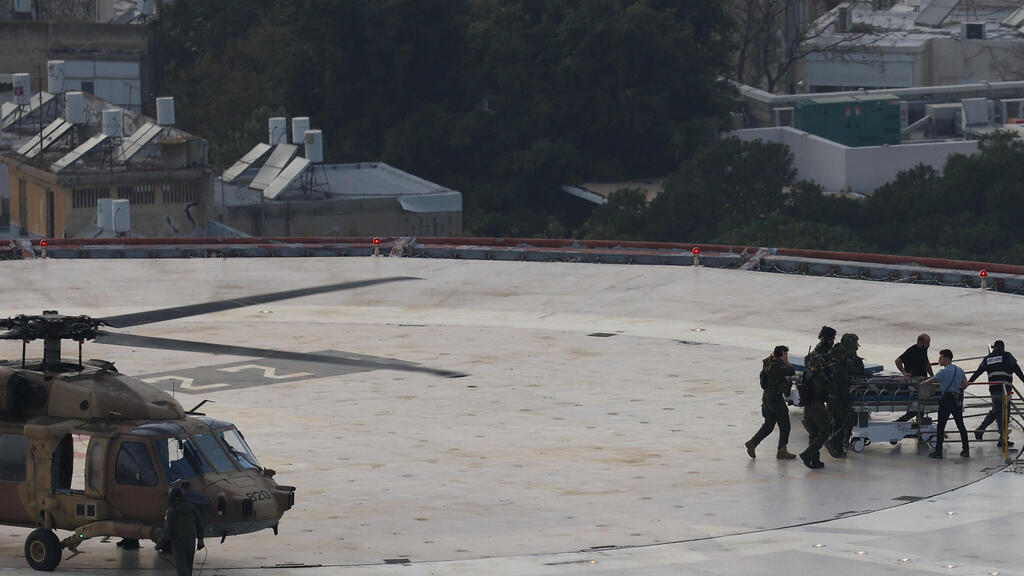

Military chopper delivers wounded to The Tel Aviv Ichilov hospital
(Photo: Hannah McKay / Reuters)
The average in the current war was reduced to 7.1% and even 6.3% in the past month. A quarter of the injuries were considered serious. "According to global statistics, we should have now seen 800 fatalities," the military said. "The main reason that we've been successful is the immediate medical attention the wounded soldier received, sometimes administered by himself, other times by comrades. But nearby there are senior physicians and for the first time, blood transfusions are administered on the battlefield."
Another change to the previous protocol was the decision not to intubate the wounded before evacuation, to allow quick extraction to the hospital. Some 10 wounded fighters died in hospital since the war began, a considerably low number.
At the height of the fighting, 60 wounded soldiers were evacuated per day, on average, and since the offensive scaled down, there has been an average of 20 wounded per week, many of whom have returned to their units.
Most of the injuries were to exposed parts of the body, including limbs, the lower parts of the head and neck, and along the side of the body. Many of the fatalities were due to shrapnel injuries to the ribs, which are not protected by the ceramic vests used by the IDF.
In future wars, the military may decide to provide troops with lighter flack jackets that can protect more of the areas on the side of the bodies, rather than the current solution.
Should war against Hezbollah in the north, break out, the same rate of success that was seen in Gaza, may not be repeated because of the vastness and complexity of the terrain in South Lebanon, compared to the relatively small and flat battlefield in Gaza, and also because choppers used to evacuate the wounded might not have the same freedom to operate and reach the more distant soldiers in need.



